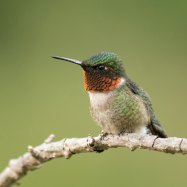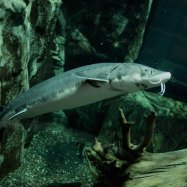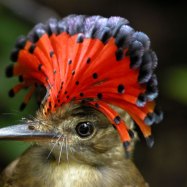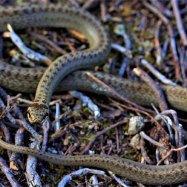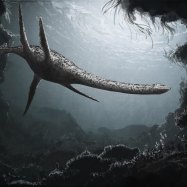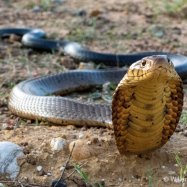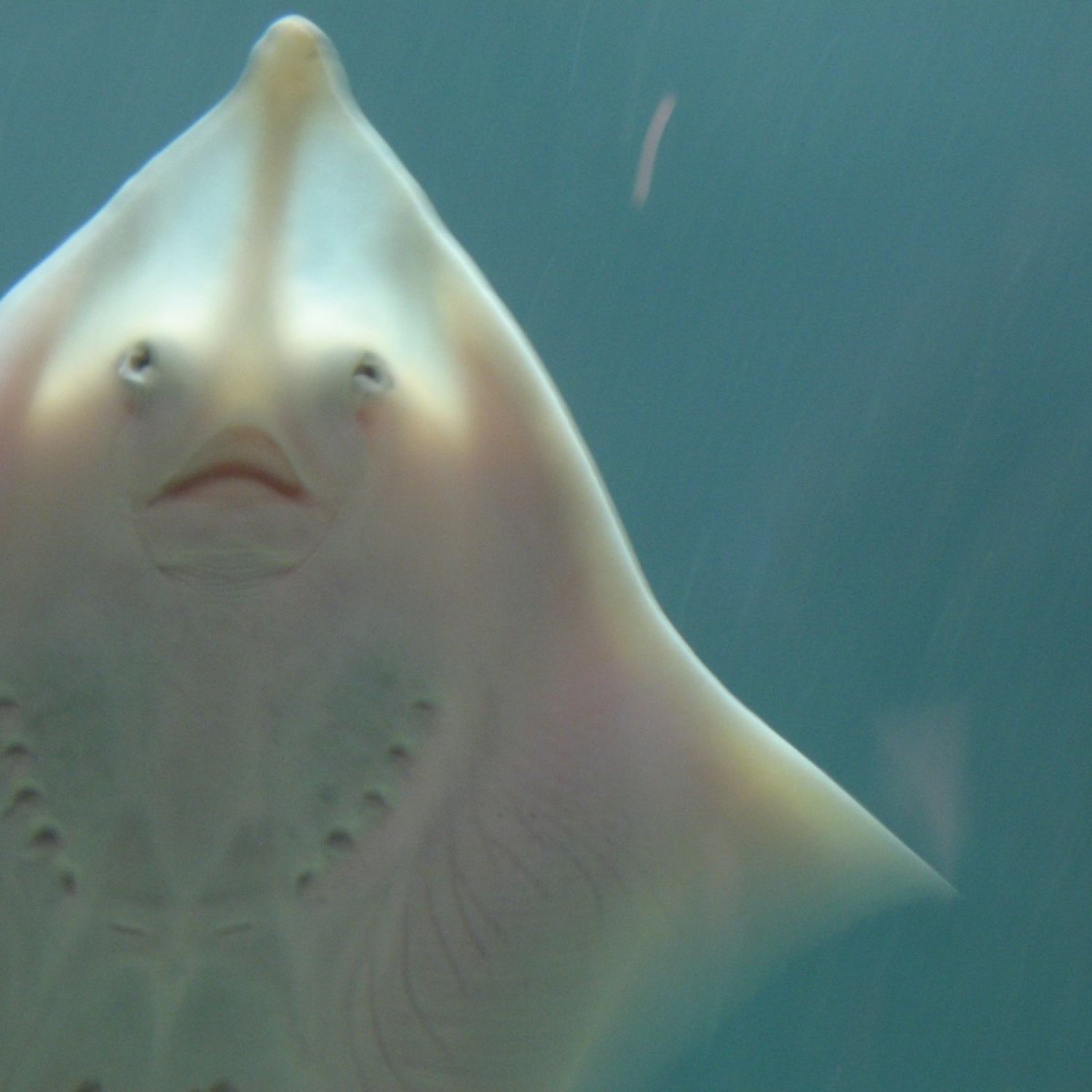
Clearnose Skate
Up to 3 feet
The Clearnose Skate, found in Eastern North America, is a type of animal categorized as Animals C under the family Rajidae. With a flat body and broad pectoral fins, these skates can reach up to 3 feet in length. They are known for their clear nose and are commonly spotted in shallow coastal waters. #ClearnoseSkate #NorthAmerica #Rajidae #SeaCreatures
Animal Details Summary:
Common Name: Clearnose Skate
Kingdom: Animalia
Habitat: Coastal waters, estuaries, and bays
The Enigmatic Clearnose Skate: A Master of Adaptation in Coastal Waters
When we think of charismatic marine creatures, images of majestic whales, vibrant coral reefs, and elusive dolphins may come to mind. But lurking in the shallows of coastal waters, bays, and estuaries is a creature that often goes unnoticed – the clearnose skate. With its unassuming appearance and elusive nature, the clearnose skate may seem like just another fish in the vast ocean. However, upon closer examination, this unassuming creature reveals a fascinating story of adaptation, survival, and resilience Clearnose Skate.An Introduction to the Clearnose Skate
Scientifically known as Raja eglanteria, the clearnose skate is a member of the Rajidae family, commonly referred to as skates or rays. These creatures are found in the class Chondrichthyes, which includes sharks and rays. The clearnose skate is native to the coastal waters of the Western Atlantic Ocean, specifically in the United States on the eastern coast of North America. Its range extends from North Carolina to Nova Scotia, but the majority of clearnose skates are found in the Chesapeake Bay region.The Perfectly Adapted Creature
One of the reasons why the clearnose skate is such a fascinating creature is its adaptability to different environments. They inhabit coastal waters, estuaries, and bays – all of which have varying levels of salinity, temperature, and food availability. With its ability to thrive in such diverse conditions, the clearnose skate has truly earned its reputation as a master of adaptation.The clearnose skate has a unique body shape that allows it to easily navigate through different environments. Its body is flat, elongated, and wedge-shaped, with a broad pectoral fin on each side Cubera Snapper. This allows them to glide effortlessly through the water, and their flattened bodies make it easier for them to hide under the sand or in shallow crevices.
One of the most notable features of the clearnose skate is its clear nose – a transparent patch on its snout. This unique adaptation helps it blend in with its surroundings, making it less visible to predators and prey alike. Additionally, its grayish-brown coloration also serves as camouflage, further enhancing its ability to hide in plain sight.
A Carnivorous Hunter
The clearnose skate is a carnivorous creature, meaning it feeds on other animals to survive. As an opportunistic feeder, the clearnose skate takes advantage of its surroundings to find its next meal. Its diet consists of small benthic invertebrates such as crabs, shrimp, and worms, which it finds buried in the sand. Using its electric sense, the clearnose skate can detect prey even when they are buried under the seafloor, allowing it to ambush its prey with precision and speed.A Key Player in the Ecosystem
As a predator, the clearnose skate plays a crucial role in the ecosystem of coastal waters. By regulating the population of their prey, clearnose skates help maintain a healthy balance in the ecosystem. They also help prevent overgrazing of seagrass beds by keeping populations of herbivores, such as crabs, in check. This contributes to the overall health of the marine ecosystem and supports the survival of other species.Navigating a Changing Habitat
While the clearnose skate may have evolved to adapt to its current environment, changing conditions in coastal waters pose a new challenge for this species. The clearnose skate is facing threats such as habitat degradation, overfishing, and pollution, which are causing declines in their populations. For example, in the Chesapeake Bay, the clearnose skate has been impacted by the destruction of seagrass beds due to development and pollution.The Need for Conservation
Despite being classified as a species of least concern by the IUCN Red List, the clearnose skate is susceptible to the changing conditions in its habitat. As apex predators, their survival is essential to the balance of coastal ecosystems. To ensure their survival, conservation efforts must be put in place to protect their habitats and regulate fishing practices.The Role of Citizen Science
One way individuals can contribute to the conservation of the clearnose skate is by participating in citizen science programs. These programs involve members of the public collecting data and information on the species, helping scientists gain a better understanding of their behavior and distribution. By volunteering to participate in these programs, individuals can help scientists monitor populations of clearnose skates and identify any potential threats to their survival.A Fascinating Creature to Study
Apart from its contribution to the ecosystem, the clearnose skate is also a fascinating creature to study. Due to its unique adaptations and behavior, researchers have been intrigued by this species for decades. Studies have shown that clearnose skates have highly developed sense organs, comparable to those of more well-known species, such as sharks. For example, clearnose skates have sensory pores on their heads that help them detect electrical signals from their prey. They also have a keen sense of smell and vision, which they use to locate food and navigate their surroundings.Studying the Clearnose Skate's Behavior
Research on the behavior of clearnose skates has provided valuable insights into their breeding habits, migration patterns, and social behavior. For instance, clearnose skates exhibit a yearly mating behavior, where they gather in groups and perform elaborate courtship rituals. The males use their pectoral fins to sweep sand away and create a circular area for the female to deposit her eggs. This behavior is not only fascinating to observe but also vital for understanding the reproductive cycles of this species.The Use of Technology in Research
With advances in technology, researchers have been able to study clearnose skates in their natural habitat in more detail. For instance, the use of underwater cameras and tagging tracking devices has allowed scientists to monitor their behavior and movements. Tagging and tracking have revealed that clearnose skates are capable of long-distance migrations, with some individuals traveling more than 50 miles in a few months.A Creature Worth Protecting
The clearnose skate is a remarkable creature that has evolved to survive in various environments. Its unique adaptations and behavior make it a fascinating study subject and a vital player in maintaining the balance of coastal ecosystems. However, as with any species, their survival is threatened by human actions and changing environmental conditions. To ensure the survival of this enigmatic creature, conservation measures must be implemented, and further research on their behaviors and adaptations must be conducted. Only then can we fully appreciate and protect the clearnose skate and other species like it, ensuring a healthy and diverse ocean for future generations.

Clearnose Skate
Animal Details Clearnose Skate - Scientific Name: Raja eglanteria
- Category: Animals C
- Scientific Name: Raja eglanteria
- Common Name: Clearnose Skate
- Kingdom: Animalia
- Phylum: Chordata
- Class: Chondrichthyes
- Order: Rajiformes
- Family: Rajidae
- Habitat: Coastal waters, estuaries, and bays
- Feeding Method: Carnivorous
- Geographical Distribution: Western Atlantic Ocean
- Country of Origin: United States
- Location: Eastern North America
- Animal Coloration: Grayish-brown
- Body Shape: Flat body with broad pectoral fins
- Length: Up to 3 feet
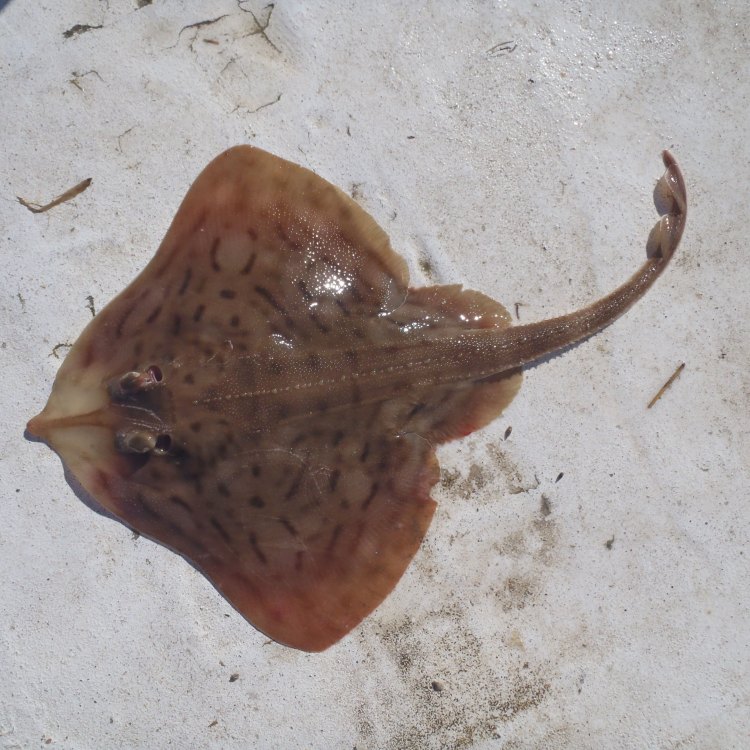
Clearnose Skate
- Adult Size: Around 2 to 3 feet
- Average Lifespan: Up to 10 years
- Reproduction: Oviparous
- Reproductive Behavior: Egg-laying
- Sound or Call: No specific sound or call
- Migration Pattern: No long-distance migration
- Social Groups: Solitary
- Behavior: Nocturnal
- Threats: Overfishing and habitat degradation
- Conservation Status: Near Threatened
- Impact on Ecosystem: Important predator in the coastal food chain
- Human Use: Commercial fishing for meat and wings, used as bait
- Distinctive Features: Prominent, clear nose with a serrated snout
- Interesting Facts: Clearnose skates are bottom-dwelling species that bury themselves in sediment for camouflage and protection.
- Predator: Sharks, large fish
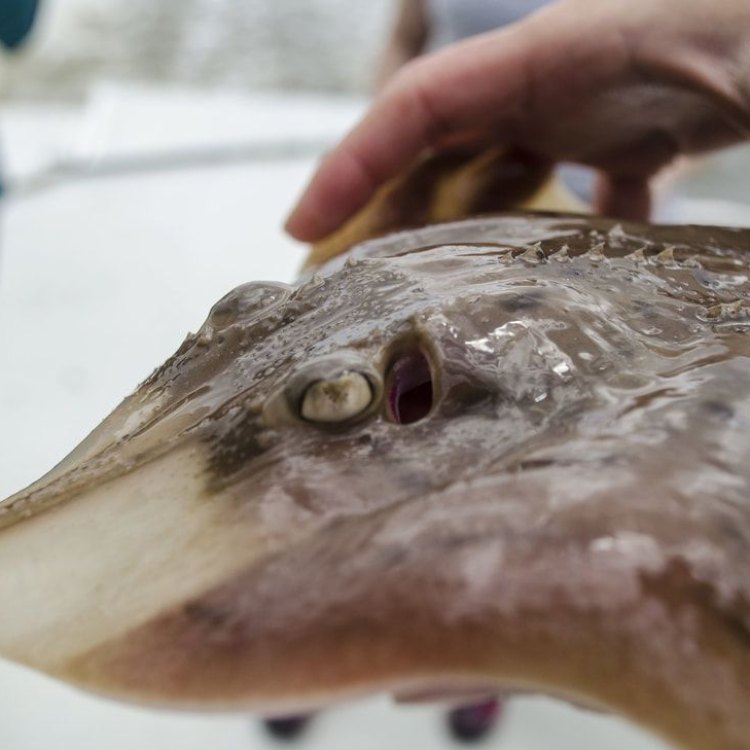
Raja eglanteria
The Fascinating World of the Clearnose Skate
The oceans are full of mysterious creatures, some of which have yet to be discovered by humans. One such creature is the clearnose skate, a marine species that belongs to the Rajidae family and can be found in the western Atlantic Ocean. Despite its comparatively small size, the clearnose skate has a fascinating list of features that make it a unique and important species in the oceanic ecosystem. From its distinctive physical characteristic to its behavior patterns and impact on the ecosystem, let's dive deep into the world of this extraordinary marine creature PeaceOfAnimals.Com.Adult Size and Average Lifespan
The clearnose skate, also known as Raja eglanteria, is a small-sized sea creature with an average length of 2 to 3 feet. It is often mistaken for a stingray due to its flat body and long, pointed wings, but it is, in fact, a type of skate. Skates are closely related to sharks and rays, and like their relatives, they have cartilage instead of bones. This allows them to be more flexible and maneuverable in the water.
On average, clearnose skates have a lifespan of up to 10 years in the wild. However, with the increasing threats to their existence, this lifespan can be significantly reduced.
Reproduction and Behavior
As an oviparous species, the clearnose skate reproduces through egg-laying. The females lay their eggs in protective egg cases, commonly known as "mermaid's purses," which have a distinctive rectangular shape and are often found washed up on beaches. These egg cases provide a safe environment for the eggs to develop and hatch after several months Childrens Python. One female skate can lay up to 50 egg cases at a time.
Aside from their reproduction behavior, clearnose skates also have some interesting nocturnal behavior. They are known to be solitary creatures, preferring to hunt and rest alone instead of forming social groups. The skates are mostly active at night when they scavenge for food along the ocean floor. During the day, they bury themselves in the sediment for camouflage and protection from predators.
Sound or Call and Migration Pattern
Unlike many other marine creatures, clearnose skates do not produce any specific sound or call. However, they do have a unique way of communicating with one another. They use their electric sense, which is generated by the organs in their snout, to communicate with other skates. Similar to how sharks use their electric sense, the skates can sense the electric fields of other animals, including prey.
Another interesting fact about clearnose skates is their lack of long-distance migration patterns. While some species of skates are known to migrate for breeding or finding food, the clearnose skate remains in its home range for most of its life.
Predators and Human Use
No creature in the ocean is without predators, and the clearnose skate is no exception. They are often preyed upon by large fish and some species of sharks. Their small size and nocturnal behavior make them vulnerable to these predators.
On the other hand, humans also play a significant role in the population decline of clearnose skates. They are commercially fished for their meat and wings, which are considered a delicacy in some parts of the world. Skates are also used as bait in lobster and crab traps. The excessive fishing of clearnose skates has put a strain on their population, making them near-threatened according to the IUCN Red List.
Threats and Conservation Status
The main threat to the clearnose skate is overfishing. Due to their slow reproduction rate and high demand, their population has significantly decreased in recent years. Additionally, habitat degradation, pollution, and accidental capture in fishing gear also pose a threat to their survival.
As a result, the clearnose skate is currently classified as "near-threatened" on the IUCN Red List. Several conservation efforts are in place to protect this species, such as fishing regulations and habitat restoration projects.
Impact on the Ecosystem
Despite being a small and often overlooked species, the clearnose skate plays an essential role in the coastal food chain. As bottom-dwelling creatures, they feed on small fish, crustaceans, and mollusks. This helps to keep their prey populations in check, ensuring a healthy ocean ecosystem.
Moreover, clearnose skates are also important prey for larger fish and sharks, making them an essential part of the ocean's food web. Their declining population can have a ripple effect on the ecosystem, affecting other species and ultimately leading to an imbalance in the ocean's natural balance.
Distinctive Features and Interesting Facts
One of the most distinctive physical features of the clearnose skate is its prominent, clear nose, which gives it its name. This nose is lined with a serrated snout, which it uses to sense the electrical currents in the water. It also helps them locate prey buried in the sediment.
Aside from this unique feature, clearnose skates are also interesting creatures due to their bottom-dwelling behavior and their ability to bury themselves to avoid predators. They are also one of the few egg-laying species within their family, making them even more unique.
In Conclusion
The clearnose skate may seem like a small and insignificant species in the vast ocean, but it plays a crucial role in maintaining the balance of the ecosystem. Its unique features, reproductive behavior, and impact on the food chain make it a fascinating creature worthy of our attention and protection. As we continue to learn more about this extraordinary species, it is our responsibility to ensure its survival for many years to come.
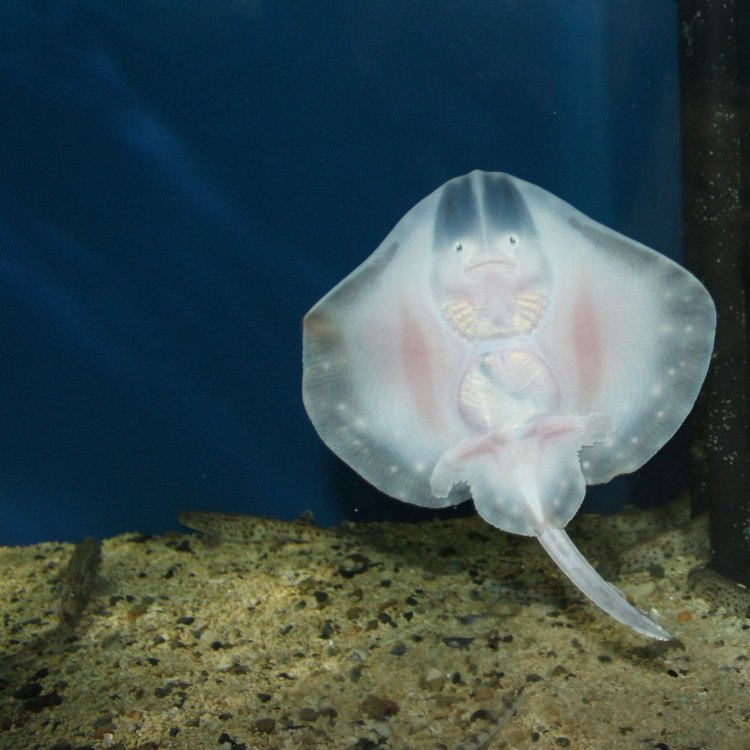
The Enigmatic Clearnose Skate: A Master of Adaptation in Coastal Waters
Disclaimer: The content provided is for informational purposes only. We cannot guarantee the accuracy of the information on this page 100%. All information provided here may change without prior notice.


